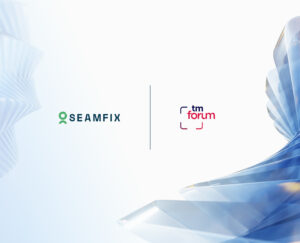Role-Based and Attribute-Based Access: A Beginner’s Guide to Role-Based Access Control (RBAC)
Imagine you’re running a busy restaurant. You’ve got chefs in the kitchen, servers on the floor, and managers overseeing everything. Now, imagine if the chefs had access to the cash register, or the servers could change the menu. Chaos, right? That’s why you need rules about who can do what. In the digital world, this concept is called Role-Based and Attribute-Based Access in IAM, and it’s a game-changer for managing access within your organization. It ensures the right people have the right permissions based on their roles and attributes, preventing unauthorized actions and streamlining operations.
In this blog, we’ll break down Role-Based and Attribute-Based Access in IAM, explaining what RBAC is, how it works, and why it’s so important. We’ll also touch on its cousin, Attribute-Based Access Control (ABAC), and show you how solutions like Seamfix iAM can make implementing RBAC a breeze. Whether you’re an IT pro or just someone curious about how organizations stay secure, this guide is for you.
What is Role-Based Access Control (RBAC)?
Let’s start with the basics. Role-Based Access Control (RBAC) is a method of managing access to systems and data based on the roles of individual users within an organization. Instead of assigning permissions to each person one by one, you assign permissions to roles (like “manager,” “developer,” or “intern”) and then assign those roles to users.
Think of it like a set of keys. Each role has a specific set of keys that unlock certain doors. If you’re a manager, you get the keys to the office and the storage room. If you’re an intern, you might only get the key to the break room. It’s simple, efficient, and keeps everything secure.
Why RBAC Matters
So, why should you care about Role-Based and Attribute-Based Access in IAM? Here are a few reasons:
- Security: By limiting access to only what’s necessary, RBAC reduces the risk of data breaches and insider threats.
- Efficiency: Instead of managing permissions for each user individually, you can manage them by role, saving time and reducing errors.
- Compliance: Many industries have regulations that require strict control over access to sensitive data. RBAC helps you stay compliant.
- Scalability: As your organization grows, RBAC makes it easy to manage access for new users and roles.
What About Attribute-Based Access Control (ABAC)?
While RBAC is all about roles, Attribute-Based Access Control (ABAC) takes things a step further. Instead of just looking at roles, ABAC considers additional attributes, such as:
- User Attributes: Job title, department, location.
- Resource Attributes: File type, sensitivity level.
- Environmental Attributes: Time of day, location of access.
For example, with ABAC, you could create a rule that says, “Managers in the Finance department can access budget files only during business hours from the office network.” It’s more granular and flexible than RBAC but also more complex to implement.
How Seamfix iAM Simplifies RBAC Implementation
Now, let’s talk about how Seamfix iAM can help. Seamfix iAM is a modern Identity and Access Management (IAM) solution that includes robust RBAC capabilities. Here’s why it’s a great choice for your organization:
- User-Friendly: Seamfix iAM’s RBAC is designed with the end-user in mind. It’s easy to set up and use, even for non-tech-savvy employees.
- Flexible: Whether you’re managing a small team or a large enterprise, Seamfix iAM can scale to meet your needs.
- Secure: With features like Multi-Factor Authentication (MFA) and encryption, Seamfix iAM ensures that your data stays secure.
- Comprehensive: Seamfix iAM supports both RBAC and ABAC, giving you the flexibility to choose the right approach for your organization.
For example, imagine you’re onboarding a new employee. With Seamfix iAM, you can simply assign them a role (e.g., “IT Support”), and they’ll automatically get the permissions they need to do their job. It’s Role-Based and Attribute-Based Access in IAM made simple.
Final Thoughts
Role-Based Access Control (RBAC) is the key to managing access in a way that’s secure, efficient, and scalable. By assigning permissions based on roles, you can ensure that the right people have access to the right resources—without the headache of managing permissions for each individual user.
And with solutions like Seamfix iAM, implementing Role-Based and Attribute-Based Access in IAM has never been easier. It’s designed to make the process seamless, scalable, and user-friendly—so you can focus on what really matters: running your business.
So, what are you waiting for? Take the first step toward better access control by exploring how Seamfix iAM can help.
Ready to learn more? Check out Seamfix iAM and its RBAC capabilities here.






